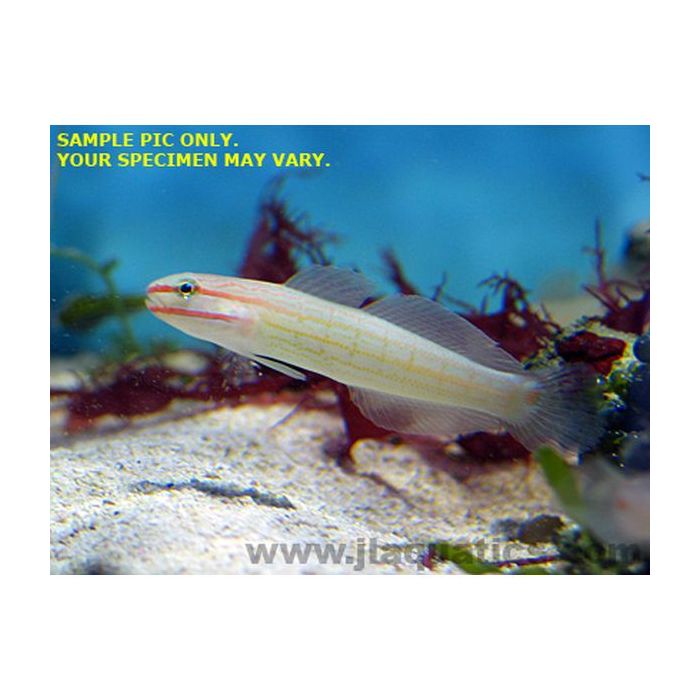Orange Stripe Goby (Asia Pacific)
The Orange Stripe goby is a beautiful with a pearly white body decorated with two bright orange stripes running the length of its body and many lighter orange vertical stripes. These vertical stripes intersecting with the horizontals give it another common name, the crosshatch or orange marked goby. It also has an attractive eyespot on its tail. Males and females are visually identical. The Orange Stripe goby does not grow quite as large as other sand sifting gobies, growing to approximately 4 inches; we recommend an aquarium 30 gallons or larger.
Sand sifting, or sleeper gobies, are famous for their busy work of keeping the sand looking clean and free of debris. They require a fine sand bed of at least two inches in order to feel secure and also to exhibit normal behavior, which includes near constant sifting of the sand through their gills. They do this to extract any edible particles, such as small shrimp and copepods, worms, algae and more. They are so efficient at eating micro-fauna from the sand that unless the aquarium is large we do not recommend keeping them with live-food dependent species such as dragonets or signal gobies.
Sand sifting gobies have large mouths and may eat very small fish or shrimp, but are peaceful with all other types of fish. They may fight with other sifter gobies unless each fish is given at least 50 gallons worth of space. We recommend the tank be securely covered as sand dwelling gobies may be prone to jumping from open top aquaria. Their bottom sifting activities also leave them vulnerable to intestinal parasites and we recommend de-worming them before adding to a display aquaria.
Sleeper gobies are commonly mistaken as watchman gobies; however sifter gobies are lone fish that do not pair with a pistol shrimp. If two fish are added to a sufficiently large aquarium at the same time it may be possible to keep a pair of sleeper gobies.
Sleeper gobies are primarily carnivores and their diet should include plenty of high quality meaty items, marine algae, Spirulina, and frozen Mysis shrimp. It is preferable to feed more than once a day. Frozen food is best, however in time they may learn to eat dry foods.
As one of the largest families of fish there are near countless varieties of gobies which inhabit every different niche on the reef. They are coral safe and typically quite active and friendly with other fish. They have the ability to change sex to form pairs, although they don't always do so. Most gobies are imported from the Philippines.
Gobies are diminutive fish typically with elongated bodies, and as such we do not recommend any aggressive or large-mouthed fish to be kept with them; this includes all groupers, snappers, sweetlips, soapfish, lionfish, eels, goatfish, anglers/frogfish, leaf fish, etc.

